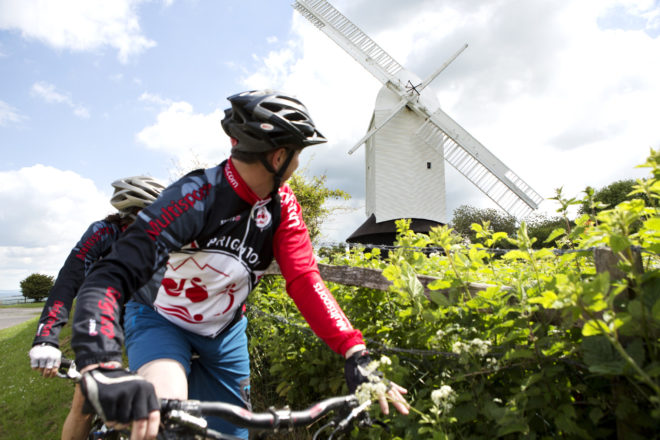Why planning for healthy places is good for all of us
July 30, 2021

Tim Slaney, Director of Planning for the South Downs National Park Authority, gives his take on the growing role of planning in helping people’s health and wellbeing.
 Planning and health are inextricably linked – and I believe that link is as important as ever.
Planning and health are inextricably linked – and I believe that link is as important as ever.
Of course, the very roots of our planning system stemmed from the need to improve health, address squalor and social inequality.
The Housing and Town Planning Act 1909 was a milestone piece of legislation relating to emerging planning.
The Act was partly the result of a growing interest in “garden city” schemes that emerged in the late 19th century and a realisation that housing needed to be provided, and land managed, in a way that was good for health, and, in turn, good for the economy.
Fast forward to 2021 and the health and wellbeing agenda has never been more prominent.
With more people working from home than ever before, the need for a healthy environment in which to live and work is now a basic public right. People are also taking a fresh look at their own health and the health of planet Earth, looking at ways they can connect with the environment for their own wellbeing and also help this amazing biosphere that, to date and to our best knowledge, is a total one-off. Its fragility in the face of the pandemic, climate change and human impact is now a daily aspect of many of our lives and the news around the world.
The good news is that strong and effective planning can make a real difference to both the environment and people’s health.
The World Health Organisation defines health as ‘a state of complete physical, mental and social wellbeing and not merely the absence of disease or infirmity’.
A growing body of research indicates that the environment in which we live is inseparably connected to our health across the life course. The design of our neighbourhoods can influence physical activity levels such as walking and cycling, our reliance on cars, social connectivity, mental health and, indeed, predisposition to certain life-limiting illnesses.
So how can the South Downs National Park Authority play a leading role?
Well, firstly our award-winning South Downs Local Plan was, and still is, ahead of the game, with policies that champion and prescribe creating healthy places. Healthy for nature and healthy for people – and one might argue that this is a strongly symbiotic relationship. We are part of, not separate from, nature, after all.
Our Development Management process, with a strong emphasis on landscape and design-led development and early engagement with the Authority, works in favour of creating healthy places.
An environment in which you have access to green space, can cycle to work (if you wish!), can opt for an electric car to help reduce air pollution, and live in a high-quality space where you and your family can prosper.
Developers also know that creating healthy places has strong marketing leverage.
The importance of our planning functions to administer S106 and Community Infrastructure Levy funding should not be underestimated.
In this newsletter, for instance, you’ll read about funding that has helped to install a brand-new kitchen space at a youth centre. A wonderful area where young people can relax, chat to friends and pick up some lifelong cooking skills. Just one example, of many, where the Authority has helped to make a difference to the community and people’s everyday lives.
Strategic planning is of course at the heart of what we do, but these smaller-scale measures can be just as impactful when taken as a whole.
The role of planning also dovetails with the Authority’s community outreach work and I’m really pleased we are joined up in terms of our work on health and wellbeing and have resource in place to help deliver healthy outcomes for individuals and communities.
As planning evolves over the coming years and decades, I hope that creating healthy places to live, work and play continues to be at the forefront of policymakers’ minds – and that some of the more damaging practices creeping into planning are revisited.
Crucially, shared leadership, across the disciplines of planning and health, needs to be established at the earliest stages of development to ensure places are designed using evidence-based planning principles that reflect local health and wellbeing needs.
The Authority has set the benchmark high and will continue to strive for excellence.

